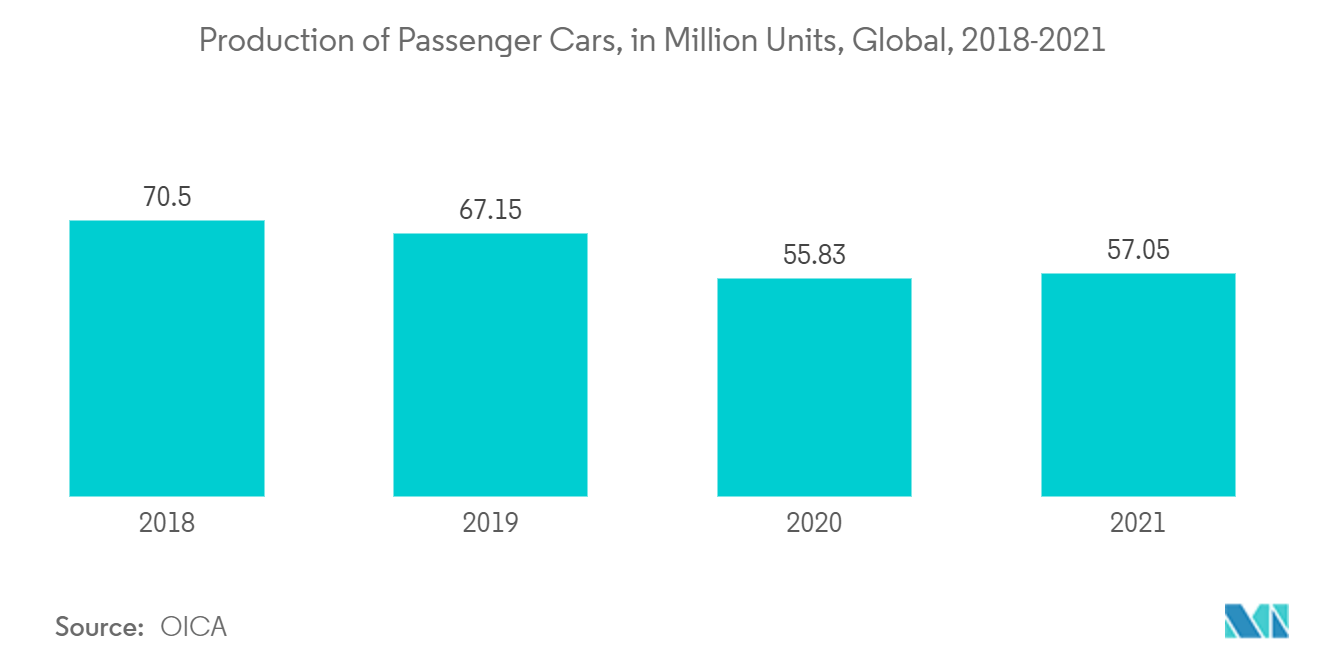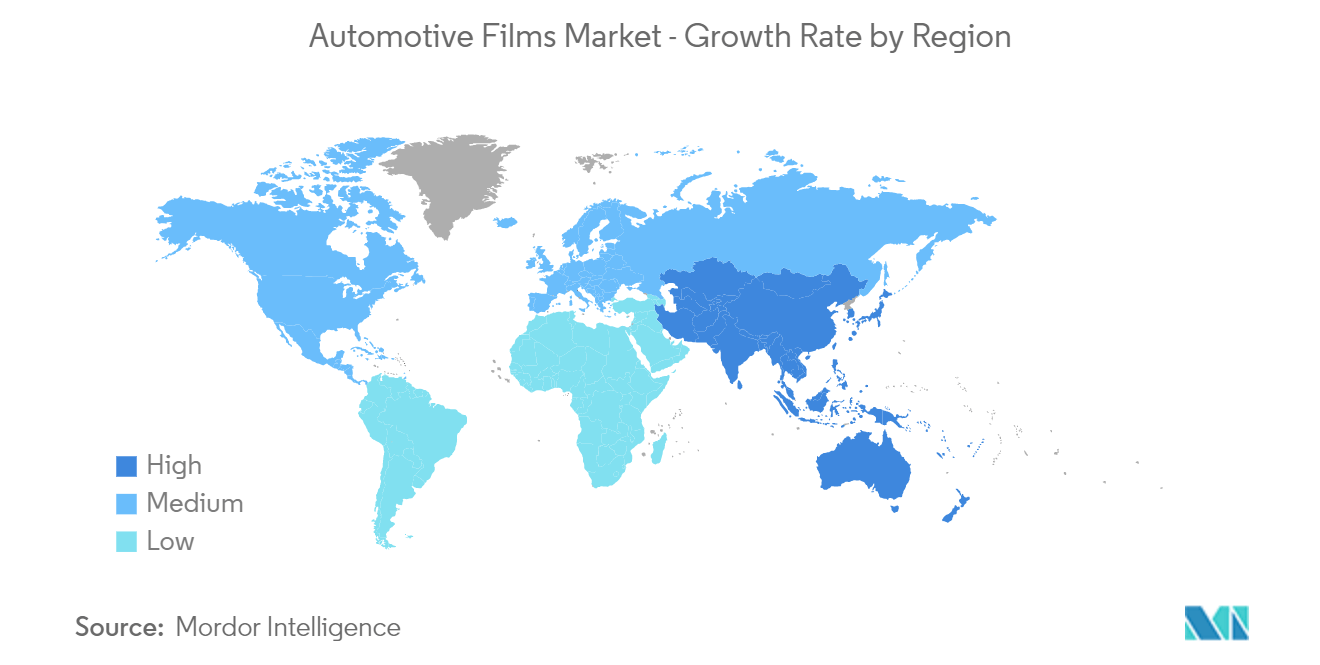Market Trends of Automotive Films Industry
Increasing Demand from the Passenger Vehicles Segment
- Passenger cars provide the dominant mode of road transport in much of the world. About 70 million new cars are produced each year, with nearly all being fueled by petrol (gasoline) or diesel. They account for about 45% of the global energy used in transport, which itself accounts for about 20% of primary energy consumption.
- Window films are laminated either on the exterior or interior of the glass windows in passenger vehicles, which provides protection as well as sustainability to the vehicles. They are installed to reduce the excessive heat transmitted to vehicles.
- Window films provide an extra level of protection against the harmful infrared and ultraviolet rays coming from the sun. Additionally, window tints reduce the workload on the vehicle's air conditioning system.
- Additionally, it provides increased privacy, a faded interior, less glare, and provides security for valuables inside the car. Additionally, it increases the vehicle's overall appearance, and hence, it finds application in passenger vehicles, mostly in windows.
- The production of passenger cars has increased globally since the pandemic began. In 2021, the global production of passenger cars was around 57.05 million units, up from 55.83 million units the previous year, according to OICA.
- As per the China Passenger Car Association (CPCA), sales in February 2023 were around 1.42 million units, 10.4% higher than a year earlier. Additionally, sales of new energy vehicles (NEVs), which include pure battery electric cars and plug-in hybrids, grew faster than the overall market, up 61% in February from a year earlier.
- The India passenger car market was valued at USD 32.70 billion in 2021, and it is expected to reach a value of USD 54.84 billion by 2027, while registering a CAGR of over 9% between 2022 and 2027, according to the India Brand Equity Foundation (IBEF).
- Therefore, the aforementioned factors are expected to have a significant impact on the market in the coming years.

The Asia-Pacific Region to Dominate the Market
- The Asia-Pacific region dominated the global market share. With automotive production and sales growth in countries such as China, India, Indonesia, Thailand, and Japan, the usage of automotive films is increasing throughout the Asia-Pacific region.
- According to OICA, China is the largest producer and consumer of automotive vehicles. In April 2022, approximately 965 thousand units of passenger cars and 216 thousand units of commercial vehicles were sold in China.
- India is also one of the biggest markets in the Asia-Pacific area for automotive films.According to OICA, around 4.4 million vehicles were produced in India during 2021, compared to 3.39 million vehicles that were produced in 2020, witnessing an increasing growth rate of about 30%.
- By volume, India is expected to be the third largest market for cars in the world by 2026, which is good news for electric and commercial vehicles.The rise in demand is attributable to an increase in average household income to become the youngest nation by 2025, increasing vehicle penetration, and expanding the research and development hubs.
- The Government of India aims to develop India as a global manufacturing center. Reforms such as the GST may boost industry growth. Under the new GST regime, the GST on electric vehicles has been reduced from 12% to 5%. The electric vehicle market is estimated to reach INR 50,000 crore (USD 7.09 billion) in India by 2025. A study by the CEEW Center for Energy Finance recognized a USD 206 billion opportunity for electric vehicles in India by 2030.
- According to OICA, Japan is the second-largest vehicle producer in the Asia-Pacific region. Around 7.85 million vehicles were produced in Japan in 2021, compared to 8.06 million vehicles that were produced in 2020, witnessing a decreasing growth rate of about 3%.
- Therefore, the aforementioned factors are expected to have a significant impact on the market in the coming years.


